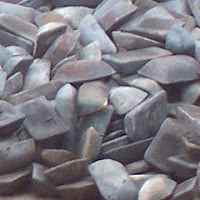This odd name is given to a material that has just come from the blast furnace before it goes through any of the refining and hardening processes that transform the metal into steel. In this state, it is a very crude iron, and it is only one step removed from the earth from which it was taken as ore. (See photo.)
The term ‘pig’ is an old expression in the iron industry and comes from the sand molds into which the streaming, molten iron is poured. As the liquid iron is poured from the furnace, it runs into a central trough or runner and then into small molds arranged on each side of the trough. The central runner is supposed to resemble a pig’s sow, while the pieces of pig iron connected to the runner are its piglets, hence the reason why it is called “pig iron.”
History of the Pig Iron
Pig iron already existed since ancient times when Europeans who lived before the Middle Ages started producing the material after discovering the production of wrought iron. Interestingly, the Chinese during the reign of the Zhou dynasty was also recorded to have been producing pig iron since 256 BC, although they are not shaped according to the ones that we see today.
Uses of Pig Iron
The first use of pig iron in medieval times was to turn it into wrought iron by using finery forges. Wrought iron is a much stronger material used for construction, although they are harder to produce than pig iron, which is why the latter material is needed for faster production of wrought iron. Finery forges will later be replaced by puddling furnaces to boost the speed of production further. When the manufacturing process for wrought iron was nearly perfected, those who worked in producing construction materials have later used pig iron to create steel.
In all of the procedures stated above, the pig iron is melted and is placed under extreme pressure from a strong current of air while it is being mixed and heated. The said process allows the impurities found in the pig iron to oxidize and transform it into a stronger and harder material. Most producers would often call the product refined pig iron or just simply refined iron.
Furthermore, the pig iron can also be utilized to create another material called gray iron. The material can be produced by melting pig iron and mixing it with other materials like scrap iron or steel while it is inside the furnace. With a slight adjustment to the carbon content in the pig iron, it will turn into gray iron.
There are also some grades of pig iron that are considered to be perfect for creating ductile iron, which is one of the strongest types of cast iron in the market. The pig irons utilized for producing ductile iron needs to be low in manganese, silicon, phosphorous, sulfur, and other materials that are supposed to be impurities in the pig iron.
In modern times, pig iron is typically found at the bottom of the blast furnace and utilized. Because of the extreme heat, the pig iron turns into its liquid form called hot metal. This hot metal will then be poured in a vessel for steelmaking. Because of the advancements in technology, pig iron is now produced in advance types of machinery, such as induction furnace, electric arc furnace, and basic oxygen furnace. However, there are still some manufacturers in the world that creates traditional pig iron in older equipment like puddling furnace, open-hearth furnace, and the finery forge.

